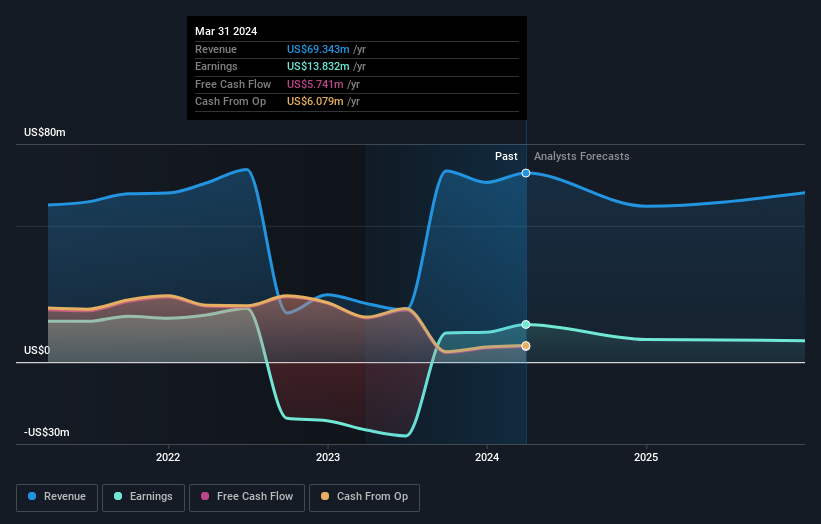Stock Analysis
- United States
- /
- Banks
- /
- NasdaqCM:PVBC
Institutions profited after Provident Bancorp, Inc.'s (NASDAQ:PVBC) market cap rose US$21m last week but retail investors profited the most

Key Insights
- Significant control over Provident Bancorp by retail investors implies that the general public has more power to influence management and governance-related decisions
- A total of 12 investors have a majority stake in the company with 50% ownership
- Insiders have bought recently
Every investor in Provident Bancorp, Inc. (NASDAQ:PVBC) should be aware of the most powerful shareholder groups. And the group that holds the biggest piece of the pie are retail investors with 39% ownership. Put another way, the group faces the maximum upside potential (or downside risk).
While retail investors were the group that benefitted the most from last week’s US$21m market cap gain, institutions too had a 39% share in those profits.
Let's delve deeper into each type of owner of Provident Bancorp, beginning with the chart below.
See our latest analysis for Provident Bancorp

What Does The Institutional Ownership Tell Us About Provident Bancorp?
Many institutions measure their performance against an index that approximates the local market. So they usually pay more attention to companies that are included in major indices.
Provident Bancorp already has institutions on the share registry. Indeed, they own a respectable stake in the company. This can indicate that the company has a certain degree of credibility in the investment community. However, it is best to be wary of relying on the supposed validation that comes with institutional investors. They too, get it wrong sometimes. If multiple institutions change their view on a stock at the same time, you could see the share price drop fast. It's therefore worth looking at Provident Bancorp's earnings history below. Of course, the future is what really matters.

Our data indicates that hedge funds own 20% of Provident Bancorp. That catches my attention because hedge funds sometimes try to influence management, or bring about changes that will create near term value for shareholders. Looking at our data, we can see that the largest shareholder is Stilwell Value LLC with 11% of shares outstanding. With 9.2% and 8.8% of the shares outstanding respectively, M3F, Inc. and The Provident Bank Employee Stock Ownership Plan Trust are the second and third largest shareholders.
A closer look at our ownership figures suggests that the top 12 shareholders have a combined ownership of 50% implying that no single shareholder has a majority.
While studying institutional ownership for a company can add value to your research, it is also a good practice to research analyst recommendations to get a deeper understand of a stock's expected performance. While there is some analyst coverage, the company is probably not widely covered. So it could gain more attention, down the track.
Insider Ownership Of Provident Bancorp
The definition of company insiders can be subjective and does vary between jurisdictions. Our data reflects individual insiders, capturing board members at the very least. Management ultimately answers to the board. However, it is not uncommon for managers to be executive board members, especially if they are a founder or the CEO.
Most consider insider ownership a positive because it can indicate the board is well aligned with other shareholders. However, on some occasions too much power is concentrated within this group.
Shareholders would probably be interested to learn that insiders own shares in Provident Bancorp, Inc.. As individuals, the insiders collectively own US$4.7m worth of the US$192m company. This shows at least some alignment, but we usually like to see larger insider holdings. You can click here to see if those insiders have been buying or selling.
General Public Ownership
With a 39% ownership, the general public, mostly comprising of individual investors, have some degree of sway over Provident Bancorp. This size of ownership, while considerable, may not be enough to change company policy if the decision is not in sync with other large shareholders.
Next Steps:
I find it very interesting to look at who exactly owns a company. But to truly gain insight, we need to consider other information, too. Be aware that Provident Bancorp is showing 1 warning sign in our investment analysis , you should know about...
Ultimately the future is most important. You can access this free report on analyst forecasts for the company.
NB: Figures in this article are calculated using data from the last twelve months, which refer to the 12-month period ending on the last date of the month the financial statement is dated. This may not be consistent with full year annual report figures.
Valuation is complex, but we're helping make it simple.
Find out whether Provident Bancorp is potentially over or undervalued by checking out our comprehensive analysis, which includes fair value estimates, risks and warnings, dividends, insider transactions and financial health.
View the Free AnalysisHave feedback on this article? Concerned about the content? Get in touch with us directly. Alternatively, email editorial-team (at) simplywallst.com.
This article by Simply Wall St is general in nature. We provide commentary based on historical data and analyst forecasts only using an unbiased methodology and our articles are not intended to be financial advice. It does not constitute a recommendation to buy or sell any stock, and does not take account of your objectives, or your financial situation. We aim to bring you long-term focused analysis driven by fundamental data. Note that our analysis may not factor in the latest price-sensitive company announcements or qualitative material. Simply Wall St has no position in any stocks mentioned.
Valuation is complex, but we're helping make it simple.
Find out whether Provident Bancorp is potentially over or undervalued by checking out our comprehensive analysis, which includes fair value estimates, risks and warnings, dividends, insider transactions and financial health.
View the Free AnalysisHave feedback on this article? Concerned about the content? Get in touch with us directly. Alternatively, email editorial-team@simplywallst.com
About NasdaqCM:PVBC
Provident Bancorp
Operates as the bank holding company for BankProv that provides various banking services to commercial and consumer clients in the United States.
Flawless balance sheet and slightly overvalued.

